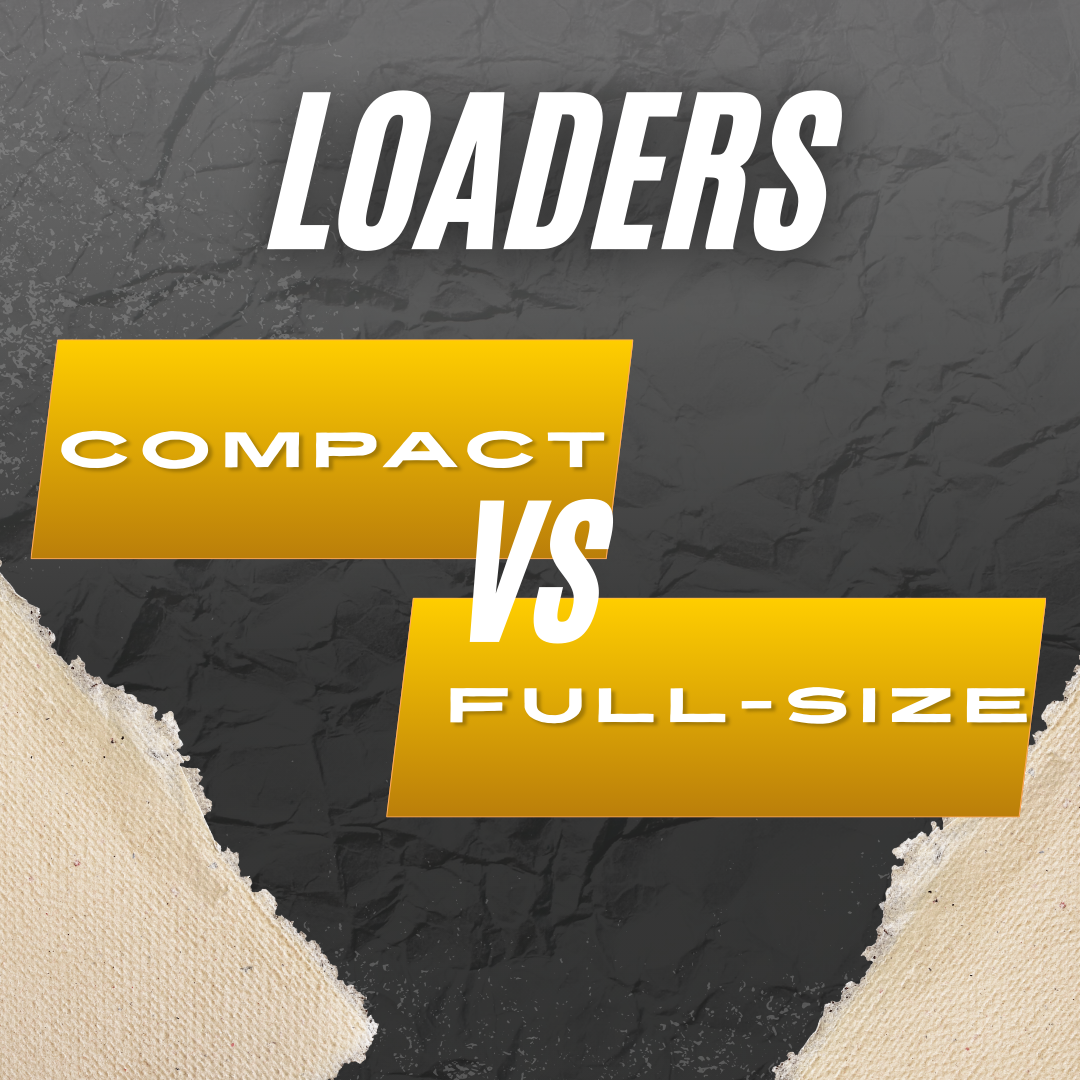Iron Insights
Compact vs. Full-Size Loaders: Choosing the Right Tool for the Job
When it comes to moving material, nothing gets the job done faster than a loader. But not all loaders are created equal. From tight urban sites to expansive quarries, selecting the right loader can make or break your productivity—and your budget. Let’s dig into the differences between compact and full-size loaders and help you choose the right tool for your operation.
Size and Maneuverability
Compact Loaders
Compact loaders are designed to excel in tight spaces. With smaller footprints and tighter turning radii, they thrive on construction sites, landscaping jobs, and areas where access is limited. Their maneuverability allows operators to get into corners and work around obstacles that would stop a full-size machine in its tracks.
Full-Size Loaders
Full-size loaders are built for volume and power. They dominate large-scale operations like mining, quarrying, and major road construction, where space is not an issue. While they aren’t as nimble in confined areas, their larger buckets and longer reach make short work of heavy loads and bulk material handling.
Lifting Capacity and Power
Compact Loaders
Expect compact loaders to handle lighter loads—generally up to 4–5 tons. Their engines are smaller, which translates into less hydraulic and lifting power compared to their full-size counterparts. However, for tasks like moving pallets, gravel, soil, or demolition debris, a compact loader is often more than sufficient.
Full-Size Loaders
Full-size loaders shine in lifting power, capable of handling 10–40 tons or more, depending on the model. Heavy-duty hydraulics and reinforced frames allow these machines to tackle rock, sand, and large quantities of aggregate efficiently. If your operation demands high-capacity hauling or continuous heavy lifting, a full-size loader is the clear choice.
Versatility and Attachments
Both compact and full-size loaders can use a variety of attachments—buckets, forks, grapples, and snow plows, to name a few—but compact loaders often win when it comes to attachment versatility in constrained spaces. Their smaller frames allow operators to switch tools easily without the logistical hassle of moving a massive machine.
Full-size loaders, meanwhile, support larger, specialized attachments that handle more material per pass. For tasks like quarrying or large-scale excavation, these attachments are not just convenient—they’re essential.
Cost and Efficiency
Compact loaders generally have lower purchase prices, consume less fuel, and incur lower maintenance costs. They’re ideal for small-to-medium-sized projects where budget and operating efficiency are critical.
Full-size loaders, though more expensive to buy and operate, can offer unmatched productivity on large jobsites. One full-size loader can often replace multiple compact machines, cutting labor time and keeping operations moving at scale.
Operator Considerations
Operator skill and comfort also play a role. Compact loaders offer excellent visibility and tight controls, making them less intimidating for newer operators. Full-size loaders, on the other hand, demand experience—especially when working with heavy loads at high speed—but reward skilled operators with unmatched efficiency and power.
Making the Choice
Ultimately, the right loader comes down to your job requirements:
- Choose a compact loader if you need agility, lower costs, and efficient operation in tight spaces.
- Opt for a full-size loader if your projects demand high lifting capacity, bulk material handling, and maximum productivity.
For enthusiasts and professionals alike, understanding these differences ensures you’re not just moving material—you’re moving it smartly.

